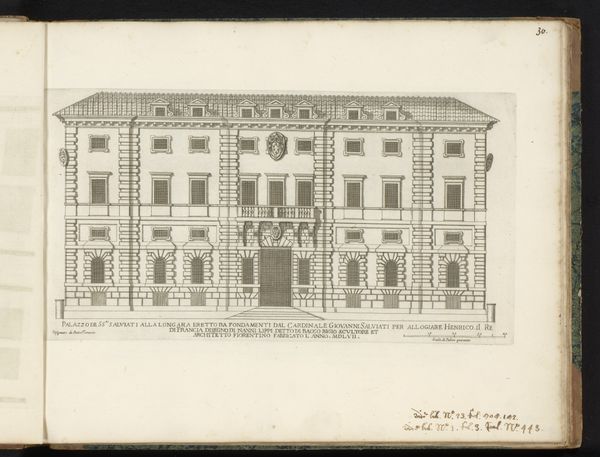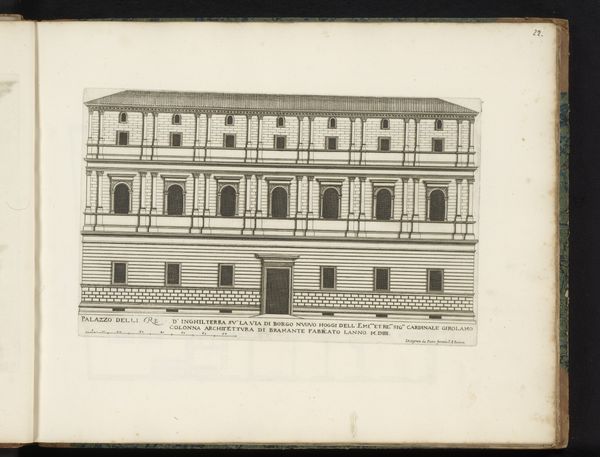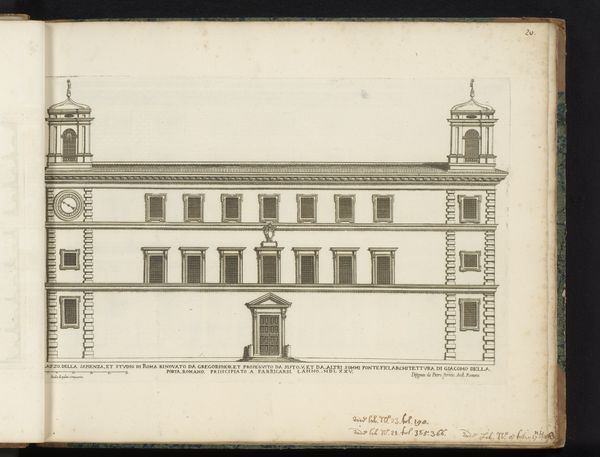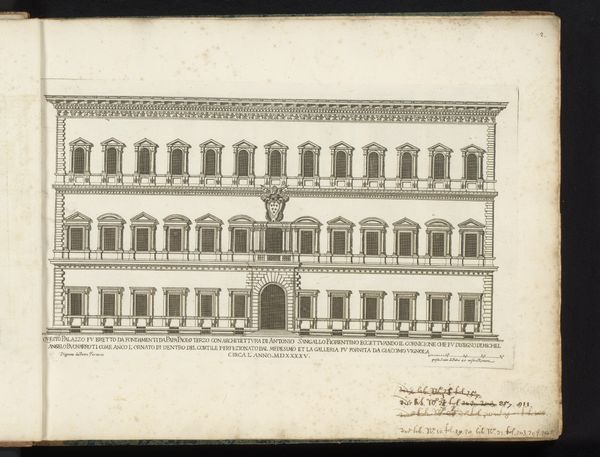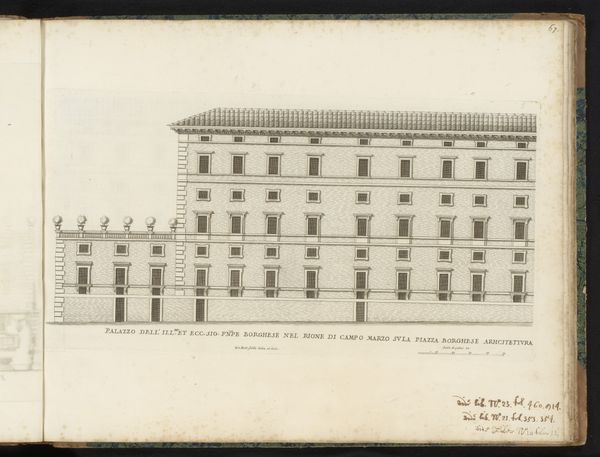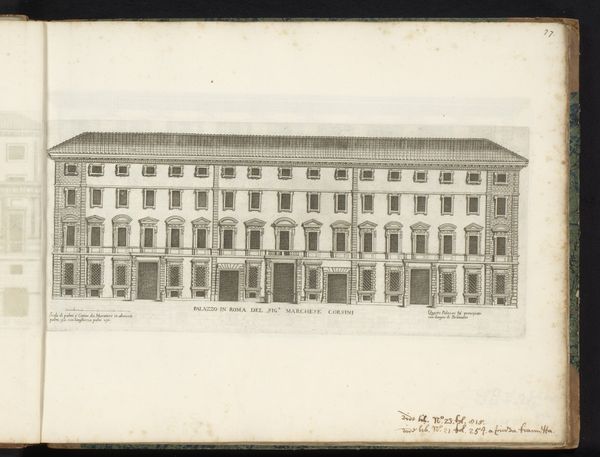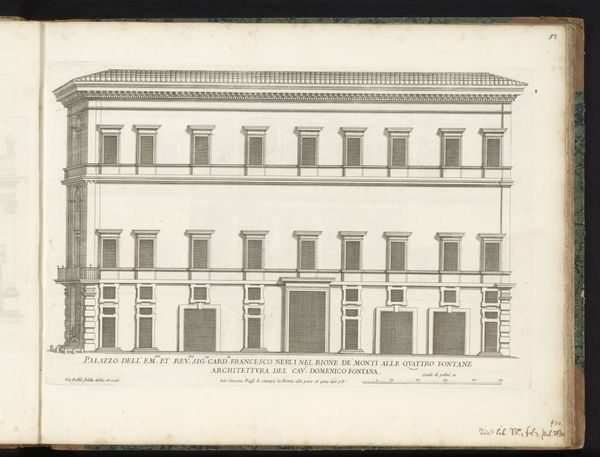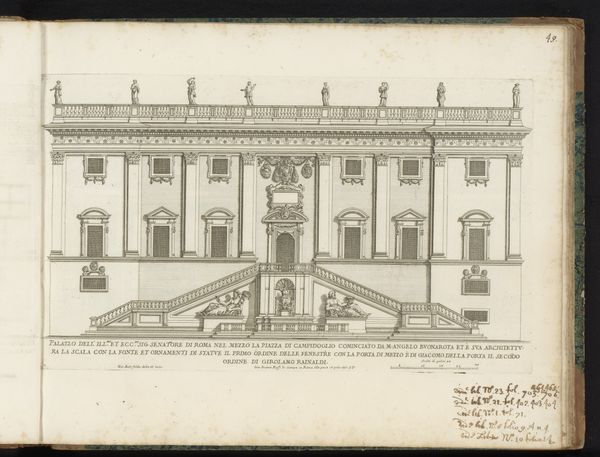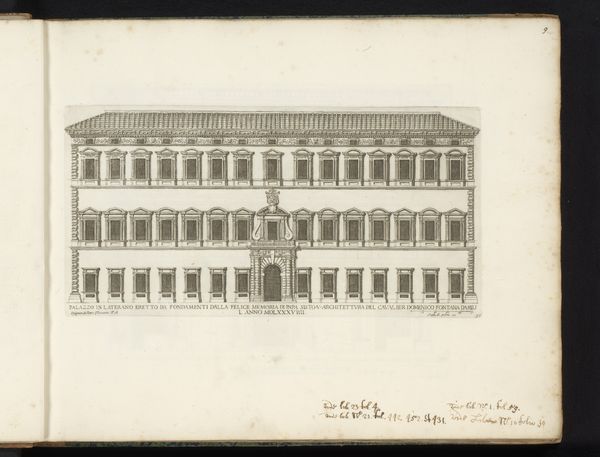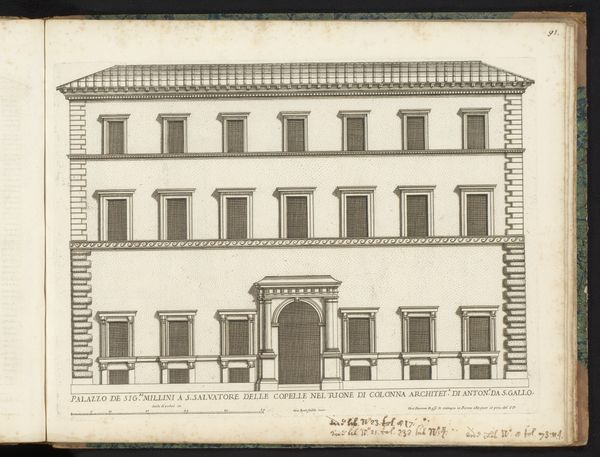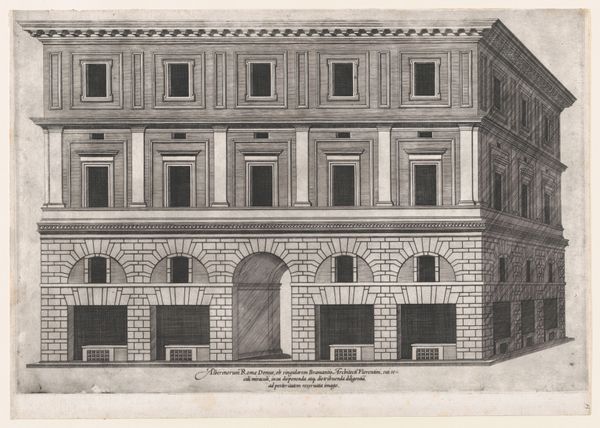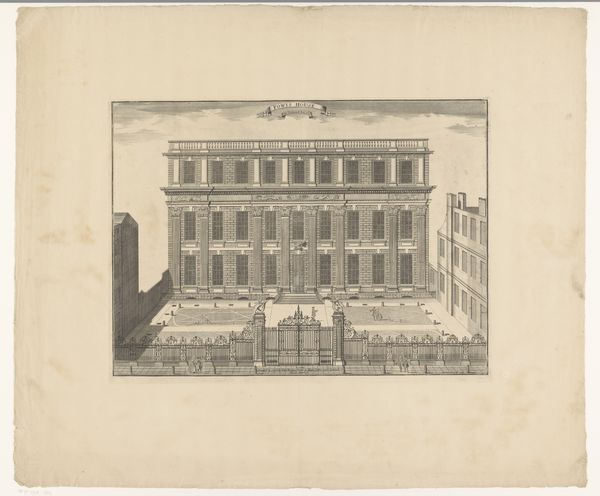
drawing, print, paper, ink, engraving, architecture
#
drawing
#
baroque
# print
#
paper
#
ink
#
geometric
#
cityscape
#
engraving
#
architecture
#
building
Dimensions: height 210 mm, width 416 mm
Copyright: Rijks Museum: Open Domain
Curator: Editor: Here we have Giovanni Battista Falda's "Façade van Palazzo Spada," created after 1655. It's a print made with ink on paper. It has this incredible, almost regimented feel, due to the rigid lines. What’s your take on this piece? Curator: From a materialist perspective, consider the conditions that made this image possible. Falda's print, multiplied and distributed, served a purpose. Editor: What purpose are we talking about here? Curator: It disseminated knowledge. It showcases Baroque architectural ideals through readily available prints. This challenged the dominance of unique, "high art" objects. Notice how the act of engraving itself – a meticulous, repetitive labor – mirrors the ordered design of the Palazzo. Do you think the availability and consumption of images like these influenced architectural trends? Editor: That’s an interesting point. It suggests architecture wasn't just dictated by wealthy patrons or the singular visions of architects, but also by what could be circulated and replicated through prints. Could it influence builders? Curator: Exactly! The Palazzo Spada, realized in brick and stone, became accessible as ink on paper to a broader audience. Also note, printmaking created labor opportunity. Editor: It's fascinating to think about how this seemingly simple print is a product of so many hands. Curator: Yes. Looking closely helps reveal complex ideas of artistic labor and widespread access to architectural trends of the period.
Comments
No comments
Be the first to comment and join the conversation on the ultimate creative platform.
